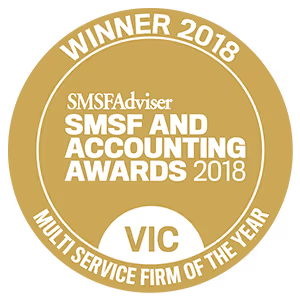Investing in property in Australia can be a powerful way to build wealth, but without the right strategy, capital gains tax (CGT) can take a significant bite out of your profits when you sell. The good news? Australia’s six-year CGT exemption rule can help you reduce or even eliminate CGT on your former home — provided you meet the right conditions.
Liston Newton Advisory’s financial advisors specialise in tax planning and property investment strategies that will help you legally minimise tax and maximise your returns. In this guide, we break down everything you need to know about the main residence exemption, how the six-year rule works, and what it means for your property investments.
What is capital gains tax?
Capital gains tax (CGT) is the tax you pay on the profit from selling a property or other asset. A CGT event occurs when you sell, transfer, or otherwise dispose of your property, triggering a tax obligation on any net capital gain made. The amount of CGT you owe is calculated as the difference between the property's purchase price (cost base) and its sale price. This tax is included in your annual income tax return rather than being a separate tax.
The rate of tax applied to capital gains depends on your individual income bracket and whether you qualify for discounts or exemptions.
It is worth noting that capital gains tax is not a separate tax and is included in your annual income tax return. Just as a capital gain increases your tax liability, a capital loss can be used to offset capital gains, reducing the amount of tax you owe on your property sale.
What is your 'main residence'?
Your main residence, or principal place of residence (PPOR), is the property you live in full-time. If you buy a property to rent out as an investment, this is considered a rental investment property.
How the ATO defines your principal place of residence (PPOR)
The Australian Tax Office (ATO) exemptions consider your property as your main residence. That’s why it’s important to understand what it actually means for a property to be your main residence. The ATO considers several factors during their review of your property, and there’s no single criterion that is the determining factor.
The ATO will typically determine that a property is your principal residence when:
- You and your family live there, and you keep your personal possessions there
- This is your main residential mailing address
- You’re enrolled on the electoral bill at this address
- Your property has all the usual utilities connected in your name
If you only satisfy some of these criteria, then the ATO will need to review your situation individually to make a qualified decision.
[tip_box]
Download our tax minimisation guide
This guide could help reduce your tax bill and improve your financial position
Inside you’ll find practical strategies and essential information to help you minimise tax legally and effectively—whether you're an individual, investor or business owner.
- Understanding legitimate tax deductions and offsets
- How to structure your business to reduce tax
- The benefits of super contributions and trust structures
- Tax-effective investment strategies
- Common tax traps and how to avoid them
[/tip_box]
How to determine when your home stops being your main residence
When you stop satisfying most of the main residence criteria mentioned above, a property is no longer considered your main residence. Typically, this happens the day you move out for an extended period of time.
What is the main residence exemption?
The main residence exemption is a key tax benefit that allows homeowners to avoid paying capital gains tax (CGT) when selling their primary home. If a property qualifies as your main residence for the entire time you own it, the Australian Taxation Office (ATO) exempts it from CGT, meaning you won’t have to pay tax on any profit from the sale.
To qualify for the main residence exemption, the ATO considers several factors, including:
- You and your family live in the property as your primary home.
- Your belongings are kept there.
- Your mail is sent to that address.
- You’re enrolled to vote using that address.
- The utilities are connected in your name.
If you meet these criteria for the entire time you own the property, you can claim a full exemption from CGT when selling it. If you only meet the criteria for part of the ownership period, you may be eligible for a partial exemption, depending on how the property was used.
How is the six-year rule connected?
The six-year rule is an extension of the main residence exemption. It allows you to move out of your home and still claim the exemption for up to six years if you rent the property out.

What is the 6-year capital gains tax exemption?
The six-year capital gains tax (CGT) exemption allows you to keep claiming your home as your main residence for tax purposes even after you move out. If you rent out the property, you can continue to claim it as your main residence for up to six years, meaning you won’t have to pay CGT when you sell. If you don’t rent it out, the exemption period is unlimited, and you can maintain your main residence status indefinitely.
This exemption is an extension of the main residence exemption, designed to give property owners flexibility when they need to move while still protecting them from CGT. It’s also commonly known as the ‘six-year absence’ rule. It’s clear why: the six-year absence rule allows you to be absent from your home while still treating it as your main residence for tax purposes.
Here’s how it works:
- If you rent out the property, it remains your main residence for up to six years for CGT purposes.
- If you don’t rent it out, there’s no time limit, and you can keep claiming the main residence exemption.
- The six-year rule resets if you move back in, meaning you can access another six-year exemption period if you leave again later.
This rule can be used multiple times as long as you move back into the property before starting a new absence period. That means you can rent out your home, return for a period of time, and then leave again — each time restarting the six-year exemption.
This exemption is particularly valuable for property investors who rent out their homes while still qualifying for CGT relief under the main residence exemption.
[tip_box]
Remember the capital gains time limit
It’s important to be aware of the capital gains time limit — if you exceed the six-year period without moving back in, your CGT exemption may no longer apply.
[/tip_box]
Example: the 6-year CGT exemption in action
Let’s say you buy a property in 2005 and live in it as your main residence for four years.
- In 2009, you move interstate for a new job and decide to rent out the property. At this point, your home no longer meets the ATO’s main residence criteria. However, under the six-year exemption rule, you can continue treating it as your main residence for tax purposes.
- You rent it out for four years, until 2013, when you return to Victoria and move back into your original home. Since you’ve moved back in, the six-year period resets, and your property continues to be fully exempt from capital gains tax (CGT).
- In 2016, another job opportunity comes up interstate, and you move out again. Since you’ve lived in the home again, you can now access another six-year exemption period while renting it out.
Because you’ve moved back in between your two absences, your home remains classified as your main residence for CGT purposes throughout the entire period. That means when you sell the property, you won’t have to pay CGT.
If you don’t move back in, the exemption will expire in 2022 — six years after your most recent departure. At that point, if you keep renting it out, you may need to pay CGT on any capital gain made after this date.

Does the 6-year CGT exemption apply to your main residence?
The six-year exemption rule applies to your main residence and reduces the CGT you pay upon selling it.
Whichever category your property falls into, you may still be required to pay CGT when it comes time to sell. And if your property has increased in value, your CGT will also increase.
Does the 6-year CGT rule apply to investment properties?
Yes. The ATO’s six-year CGT exemption rule applies to investment and rental properties.
[tip_box]
Always keep property records for CGT exemptions
It’s a good idea to get a professional market valuation of your property when the six-year period ends. This will help determine the capital gain or less and help ensure you qualify for the full exemption. If you exceed the exemption window, you’ll have a clear calculation of any capital gains you may owe tax on.
While the ATO doesn’t provide an exact timeframe for when a property re-establishes main residence status after you move back in, a period of at least six months is generally a good benchmark. The longer you stay, the stronger your case for maintaining the exemption.
If you’re unsure how this rule applies to your situation, we can help you structure your property investment to maximise CGT savings and ensure tax compliance.
[/tip_box]
Can you have two primary residences in Australia?
Yes, you can have two primary residences, but things can get complicated when you own another property. This gets even more complicated when you live in more than one property for an extended period of time.
Does the ATO 6-year rule apply to two main residences?
While you can own and live in multiple properties over time, you can only designate one as your main residence for capital gains tax (CGT) purposes at any given time.
If you buy a home and live in it for several years, then later move into a second property, the first property can still be treated as your main residence under the six-year rule. However, this only applies if you don’t declare the second property as your main residence during that period. When it comes time to sell, you will need to decide which property receives the CGT exemption.
You don’t have to make this decision until you sell one of the properties and lodge your tax return. At that point, you can calculate the capital gain on both properties and determine which one benefits most from being considered your main residence for CGT purposes.
[free_strategy_session]
Book a free property investment strategy session
Maximise your property’s value and minimise your tax with expert guidance. In a free 90-minute strategy session, we’ll help you:
- Understand how CGT exemptions, including the six-year rule, apply to your situation.
- Gain an understanding of approximate capital gains in relation to your situation.
- Gain clarity on your next steps to make informed, tax-effective investment decisions.
Take the guesswork out of property tax planning.
[/free_strategy_session]
Can foreign residents benefit from the 6-year CGT rule?
Recent rulings from the government affect the ability of foreign residents to claim this exemption.
Under this new ruling, from 1 July 2020, if you’re classed as a foreign resident, any sale will be fully taxable, even if it’s technically classed as your main residence during this time.
So, if you’re looking to sell your home but are likely to become a foreign resident in the near future, you should consider the CGT implications.

6 facts about the 6-year primary residence exemption rule
Below are six important facts to help you navigate the rules and make informed decisions about your property investments.
1. The exemption can only be claimed by individuals
If you’re claiming the six-year primary residence exemption on your capital gains tax, you must do so as an individual. Properties held within some types of business structures, like trusts or companies, are not eligible for this exemption.
2. You can only have one main residence at a time
The ATO allows only one property to be classified as your principal place of residence for CGT purposes. The only exception is when you’re moving house — during this transition, you may temporarily have two main residences, but only for a maximum of six months.
3. Earning income from your home may impact your exemption
If you use your property (your main residence, that is) to generate income — such as renting it out or operating a business from the premises — you may be disqualified from claiming the exemption or may only receive a partial exemption.
4. Home offices are treated differently from business premises
If you work from home but don’t operate a registered business on the property, you can still claim the main residence exemption. However, if your home is used as business premises — such as a workshop, salon, or storefront — you’re likely to only receive a partial exemption.
5. The exemption only applies to land with a dwelling
Vacant land is not eligible for the primary residence exemption. To claim the exemption, your property must have a dwelling on it that you have lived in as your main residence.
6. The exemption has a land size limit
The main residence exemption only applies to properties up to 2.5 hectares. If your land exceeds this size, the exemption will only cover your home and the surrounding 2.5 hectares, with the remainder subject to CGT.

There are other CGT exemptions for when you sell a property
The six-year exemption isn’t the only way to minimise your main residence CGT obligations. Here are a few more tips and tricks that you might like to read up on:
- Remember the date of purchase - properties acquired before 20 September 1985 are exempt from CGT.
- Purchase properties using your super fund - if you have a self-managed superfund and have owned your property for at least 12 months, you can claim a CGT discount if you’re still in your super accumulation phase. If you’re retired and claiming your pension, you won’t have to pay CGT at all.
- Increase your asset cost base - the cost base is the amount you pay to purchase, own, improve and sell your property: the higher your cost base, the better you can minimise your tax obligations.
Ready to sell your property? Maximise your CGT with our accountants.
The six-year exemption rule can significantly reduce your capital gains tax on property, giving you more flexibility in managing your investments. Whether you’re renting out a former home, transitioning between properties, or planning a future sale, knowing how to apply this exemption correctly can save you thousands.
Understanding the main residence exemption and CGT rules isn’t always straightforward, and making the wrong move could leave you with an unexpected tax bill. Our property tax specialists can help you structure your investments strategically, ensure compliance with ATO regulations, and make the most of every exemption available to you.






